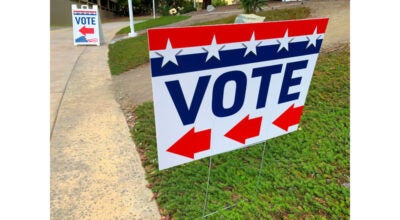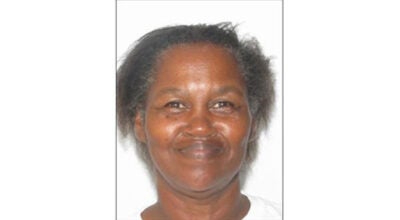‘Race to the test’
Published 6:26 pm Wednesday, February 17, 2021
|
Getting your Trinity Audio player ready...
|
Franklin High pushes to improve mid-year SOL scores
FRANKLIN
Franklin High School saw a notable decline in student performance on mid-year Standards of Learning tests.
As of Feb. 1, 59% of students who took English 11 during the first semester of the 2020-2021 school year had passed their end-of-course reading SOL, and only 32% had passed their writing SOL — an improvement over the 50% who passed reading as of March 2020 but a steep drop from the 84% who passed reading and the 77% who passed writing as of June 2019.
The Virginia Department of Education requires that all students in grades 3-12 take SOL tests each year. At the high school level, students must earn five verified credits — typically by passing end-of-course SOLs — in order to graduate. The VDOE then uses those scores to make decisions regarding a school’s accreditation.
In 2020, at the beginning of the COVID-19 pandemic, state officials allowed schools to skip the spring SOLs and granted reaccreditation waivers to every division in the state — making the fall SOLs the first students had taken in roughly a year.
“We are not pleased with our scores at Franklin High School at the midway point, but we’re also not discouraged either,” Principal Travis Felts told the city’s School Board Feb. 4. “I know it doesn’t look like FHS right now, but it will by June.”
Students who passed a course but failed the SOL for a verified credit, he explained, will be allowed to retake the test in April. Students taking courses for verified credits during the second semester will take their end-of-course SOLs in May.
When schools shuttered and went virtual in March 2020, FHS had an overall 76% pass rate for math courses, Felts said, up from 58% overall in June 2019.
“We made huge gains last school year (2019-2020) but those scores are not reflected on the VDOE School Quality Profile since accreditation was waived for the 2020-2021 school year,” Felts said.
Eleven months later, that rate had fallen to 51% based on the 55% of students who passed their Algebra I exam in the fall and 50% who passed their Algebra II exams.
While 66% of students scored a passing grade on the earth science SOL, only 39% passed the biology test, resulting in an overall 56% pass rate for the school.
In 2017 and prior, it had been the practice of all high schools in the state to give an end-of-course SOL to all students who took courses with associated standardized tests, regardless of whether they had passed enough SOLs to graduate. This resulted in students taking as many as 10 SOLs during their high school careers, but also a greater number of passing scores counting toward a school’s accreditation.
Changes at the state level in 2018, intended to reduce the number of high-stakes tests students must take, now prevent schools from giving additional SOLs in reading, writing, math, science or history once a student has passed the five needed for graduation. That’s why students who took and passed chemistry during the first semester didn’t count toward the school’s overall science pass rate.
“We have plenty of chemistry students, but those students didn’t need the chemistry SOL,” Felts said. “Our chemistry scores used to offset our earth science and biology scores because most of those students passed the SOL test.”
The same situation occurred with students taking U.S. History and World History II, leaving only the 38% who passed the World History I exam as the school’s mid-year overall history score.
But Felts is still hoping to boost that score to at least 75% by June. To reach that point, the school has implemented a formal after-school tutorial program.
“When I say formalized, we had been using that 12 o’clock to 3 o’clock timeframe for tutoring … for students to come in and get help from teachers, what we were calling ‘office hours,’” Felts said. “But now we have actual scheduled set times with rosters of students to come to tutoring from maybe 12 to 1 for World History I and 1 to 2 for Algebra I … we’re making it part of the student’s schedule; we’re making it part of the teacher’s schedule.”
“Usually we start our race to the test in late March/early April,” he added. “But this year we’re starting on Monday, Feb. 8, because for us to meet our goals, to exceed our goals, we have to have success on the retakes.”
With school still 100% virtual for all grades, Felts acknowledged the impact remote learning and the pandemic has had on student performance. The school’s attendance rate, which is typically upwards of 90% when the building is open, was down to about 83% for January, as measured by the number of students who sign into at least one class block per day.
That said, “We’ve got to make the best of the virtual reality that we’re in and not use it as an excuse,” Felts said.
“This is not for lack of effort on any teacher’s part,” School Board Chairwoman Amy Phillips agreed. “I sit through this day in and day out because I have a child that is a student within this division, so I see and hear what’s going on within these classes, and these teachers are working. They are putting forth the effort. They are challenging these kids … It is not the teachers’ fault. It is COVID.”
The results of the April retakes and May SOLs won’t impact FHS’s accreditation status, as the VDOE has granted “accreditation waived” status to all Virginia public schools for the 2021-2022 school year.





